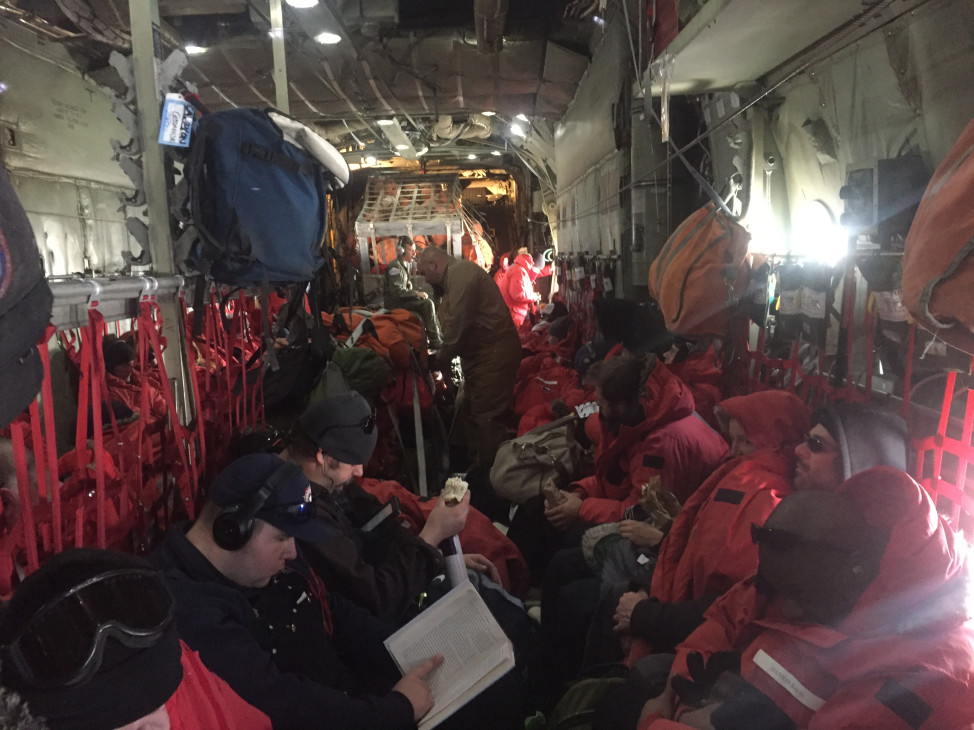
Cramped conditions inside the main cabin of the LC-130 en route to the South Pole. (Photo by Refael Klein)
After a two-hour delay, due to engine troubles, we finally boarded our south-bound flight to the Amundson-Scott Station — the U.S. scientific research station at the Geographic South Pole, the southernmost place on the planet.
SOUTH POLE JOURNAL
Refael Klein is blogging about his experiences as he spends a year working and living at the South Pole. Read his earlier posts here.
The LC-130 was about half the size of the C-17 we flew in on from Christchurch, and had fewer windows — only two at the front and two at the back. It was dimly lit. An 8-foot wall of cargo lined the cabin fore to aft. The 36 of us — scientists, engineers and tradesmen — bound for the South Pole, sat in two double rows, parallel to the cargo, knees interlocked like the teeth of a zipper.
The plane took off at 1100 (11 a.m.), using skis instead of wheels. Roaring motors drowned out any lingering concerns of mechanical issues, and people began making themselves comfortable, opening books, popping on headphones and unwrapping sandwiches. I took off my large, red down jacket, and tried to nap. Five hours later — pending good weather — we would touch down at our destination.
Two hours into the flight, suffering from stiff legs, I decided to visit the crew on the flight deck. It was a crystal-clear day with miles of visibility in every direction. Below us stretched the Transantarctic Mountain range and Beardmore Glacier.
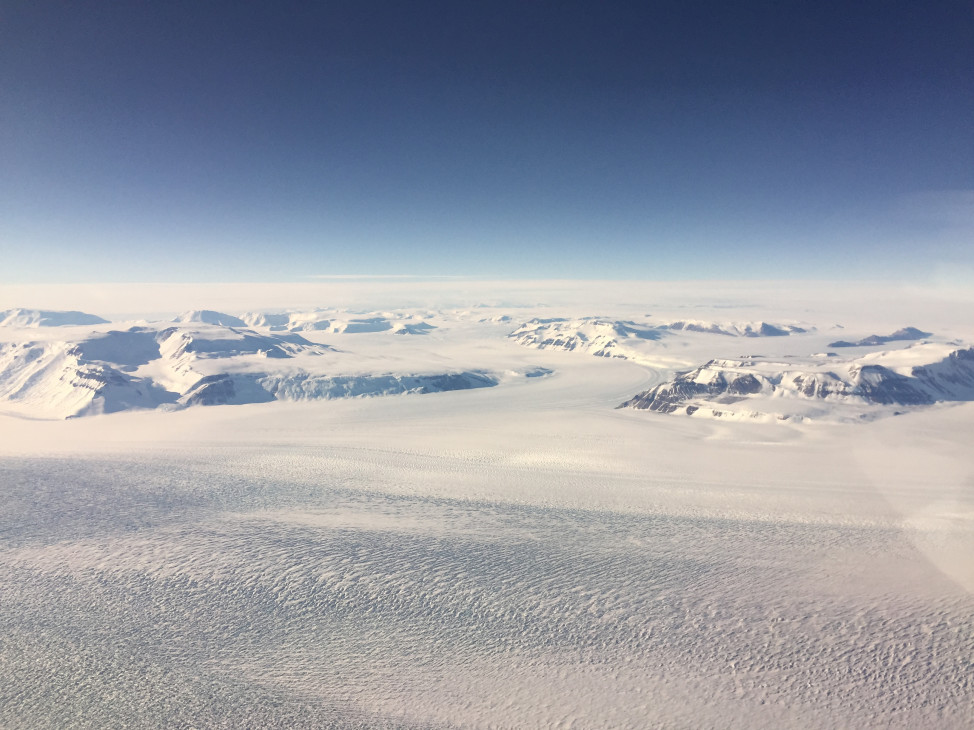
A view of the Beardmore Glacier, and the Polar ice cap beyond. (Photo by Refael Klein)
The Beardmore extends from the Ross Sea to the Polar Ice Cap, and “has crevasses big enough that we could land our plane inside of them,” or said the air craft commander. During British explorer Robert Scott’s expedition to the South Pole in the early 1900s, his team followed the Beardmore along its entire length. From 26,000 feet up, it was hard to imagine that anyone could navigate such complex terrain.
Weather in Antarctica is bad, and arguably, the worst of it is found at the South Pole. Planes can only land between the end of October and the beginning of February, when temps are above minus 50 degrees Celsius (minus 58 Fahrenheit). Below minus 50, the hydraulic systems begin to freeze and the plane, if it chooses to land, will never take off again.
Every flight that leaves from McMurdo Station, the logistics hub of the U.S. Antarctic program, for Amundson-Scott Station, flies towards its destination for at least two hours. If, after those two hours, the visibility degrades or the temps drop too low, the plane turns around and returns to McMurdo. Sometimes this happens minutes from landing.
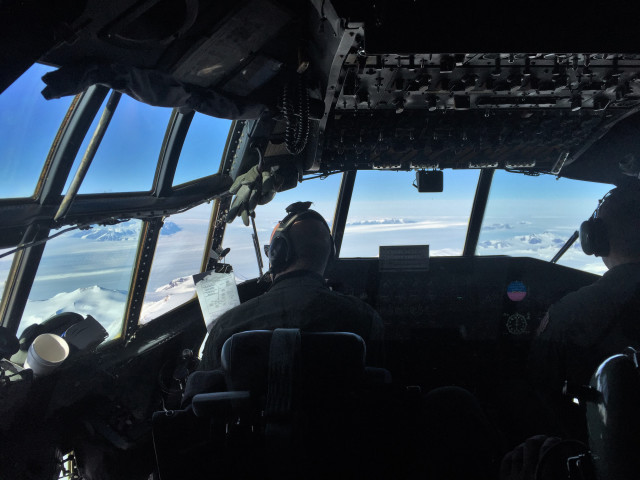
The flight deck of the C-130 as it heads towards Amundson-Scott South Pole Station. All NSF flights to Antarctica are operated by the New York National Guard. (Photo by Refael Klein)
Early season flights, which are notorious for being unsuccessful, are colloquially known as “boomerangs”. The guy sitting across from me boomeranged twice last year, and the guy sitting to his left had boomeranged at least once for each of the 10 years he’d worked on the continent.
The temperature was minus 48 Celsius (minus 55 Fahrenheit) at the Pole when I visited the flight deck at the two-hour mark. I kept my fingers crossed that it wouldn’t get any colder.
By the grace of some divine element, the temperature remained steady and we landed without incident on the 2 mile-long, ice runway at the South Pole.
As the plane glided to a stop, I changed into my extreme cold weather gear: a pair of insulated Carhartts and the large red down jacket that I had been using as a pillow. I pulled my black, wool balaclava around my face and strapped on my ski goggles so that not an inch of skin was showing.
“Wind-chill of minus 86 degrees (minus 65 Celsius),” announces a crew member over the intercom, and I, and all of the other passengers, begin to frantically dig through our carry-ons for more clothing.
Look for Refael Klein’s weekly blogs from the South Pole here on Science World.

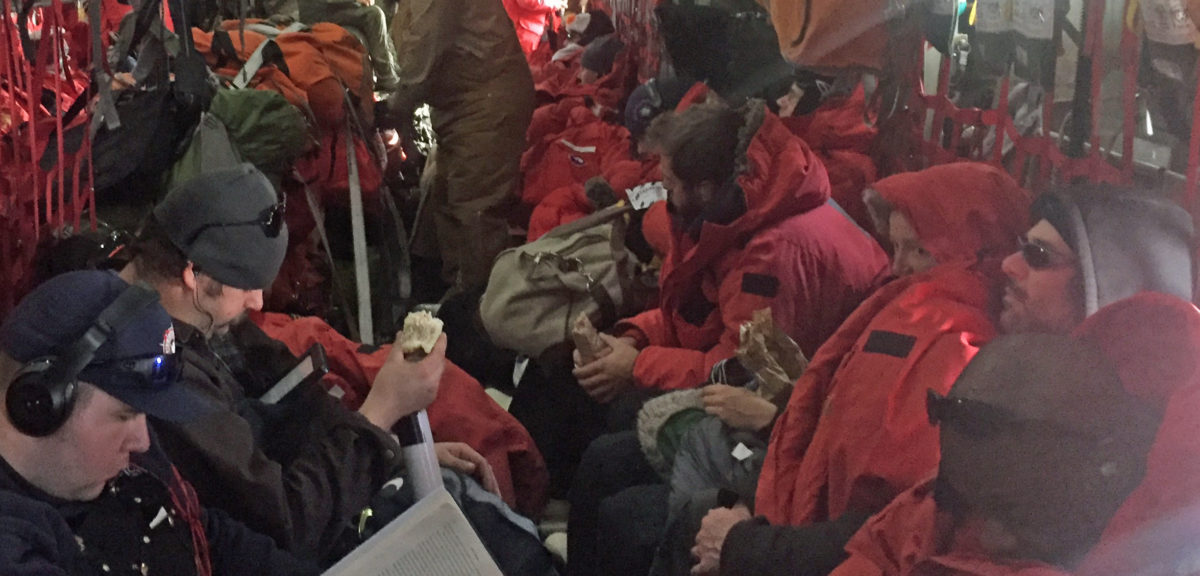
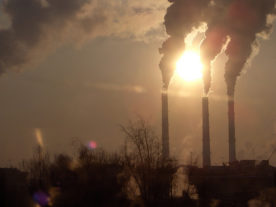
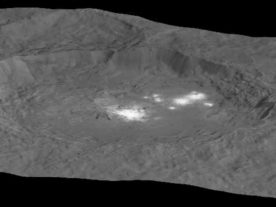




















I really enjoy your post. Sounds like you are living the dream. Stay warm !
I, also, really enjoy your posts. I look forward to future posts.
enjoyed reading your trip.mgood luck and try to stay warm.
Hello from Kentucky
Atypical Christmas weather here. 60s and low 70s this week. Will quit complaining about it being so cloudy. What an awesome opportunity to have your job. I am enjoying reading your blog.
Cheers, Peggy Sue
Hello from Pole,
Sixty’s and Seventy’s, that sounds great! I think the record high at Pole was +9F, a few years ago on the 25th of December.
All the best,
RK